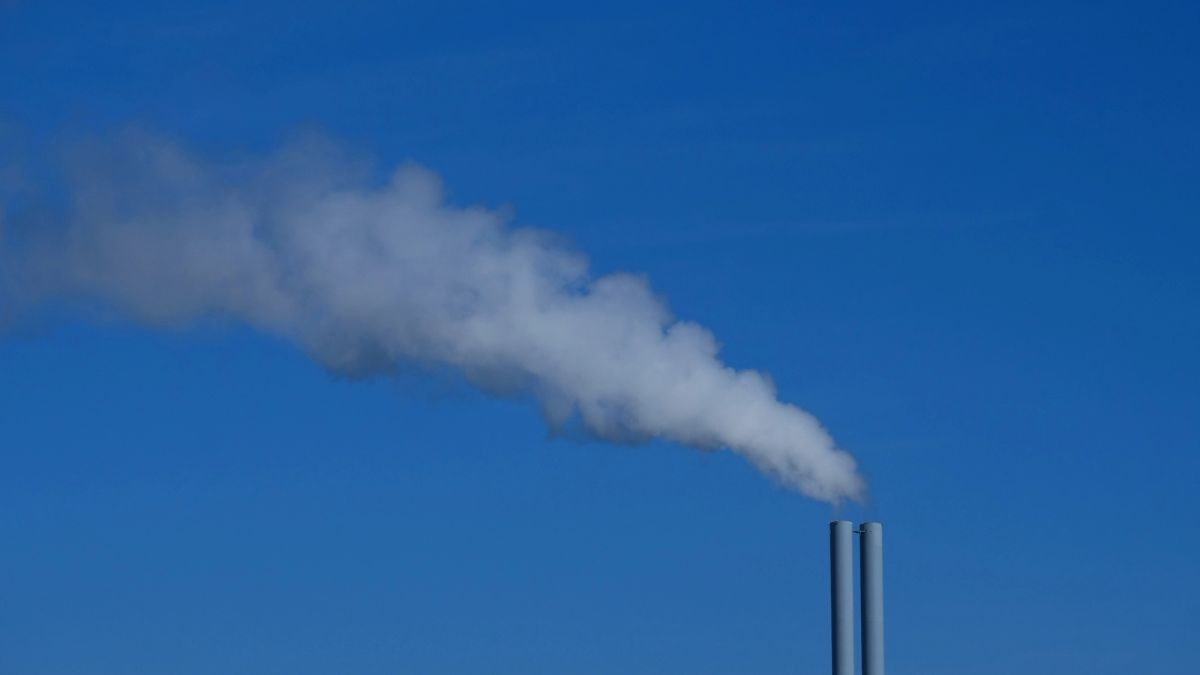CCS meaning - an introduction
One emerging climate tech has the potential to store carbon before it ever enters the atmosphere, and it’s quickly gaining steam. The technology is called carbon capture and storage (CCS) and in the UK, the government just announced they’re doubling the number of projects receiving funding.
Existing CCS facilities have the capacity to capture and remove 42.58 million tonnes of carbon dioxide from the atmosphere each year — and that number will only grow as more facilities become operational.
Carbon capture and storage is one of the most ambitious strategies we have on hand to control our global emissions — and it can also help your company decarbonise, too. In certain industries, emitting carbon is inevitable, but CCS provides a way for you to stay on top of those emissions without releasing them into the atmosphere, even potentially utilising stored carbon for other industrial pursuits.
When applied correctly, CCS won’t just help in the efforts to avoid climate disaster — it also makes good business sense.
A Guide to Deep Decarbonisation
CCS meaning: Carbon capture and storage defined
Carbon capture and storage is the process of removing large amounts of carbon that’s typically produced from industrial or manufacturing processes, and storing it safely underground before it ever gets into the atmosphere. By storing carbon underground and in geological formations instead, critical industrial processes can still go on, but without emitting nearly as much carbon as they typically would
The process can also be called carbon capture and sequestration. Usually, CCS is used to remove carbon where fossil fuels are burned, such as in coal plants or cement factories. These facilities have an extremely high carbon footprint, because they can’t decarbonise at the source. CCS offers a highly effective method to decarbonise in cases where fossil fuels can’t be completely replaced, but where they’re still providing a necessary service — think power generation, or mining for raw materials.
CCS is closely related to carbon capture, utilisation, and storage (CCUS), which includes projects where the removed carbon is used in other production processes, as well as storage. CCUS includes wider applications for the utilisation component.
A history of CCS
Although there’s still much to be developed before CCS is considered a fully mature technology, it’s been around for decades. Here’s a brief look at its history:
- 1972: The Sharon Ridge oil field in Texas becomes the first facility to capture carbon and inject it into the ground.
- 1996: Norway launches the first integrated carbon capture and storage project in the North Sea.
- 2021: The Bipartisan Infrastructure Law in the US allocates billions of dollars in funding towards CCS development and projects
- 2022: As of September, there were 30 operational CCS facilities in the world and 196 total projects in the pipeline.
The efficiency of CCS projects
CCS projects and facilities typically aim for an efficiency of 90%, according to MIT. That means that at least 90% of carbon emissions are captured and stored underground, instead of entering the atmosphere.
This is, in reality, the minimum target for efficiency that’s needed for viability and for the investment in the infrastructure to be worth it, according to Howard Herzog, Senior Research Engineer in the MIT Energy Initiative. To truly combat climate change and global warming, CCS projects need greater carbon capture efficiency.
But some projects have already exceeded 95% efficiency, and Herzog envisions projects reaching 98% or 99% — as long as there are financial incentives for them to do so.
How the CCS process works
There are three main steps involved in CCS: capture, transfer, and storage. First, carbon that’s created needs to be captured or removed before it enters the atmosphere. Then, it needs to be transported, where it can finally be stored someplace safe — typically in a geological formation underground, so that it no longer impacts global emissions.
1. Carbon capture
Carbon is usually captured and removed in two main ways: pre-combustion capture and post-combustion capture. The first is primarily suited for industrial processes, while the latter is best suited for power plants. Pre-combustion carbon capture: The raw material used for production is partially oxidised under high pressure to form a synthesis gas.
It then undergoes a water-gas shift reaction and produces a H2 and CO2-rich gas mixture. From there, the carbon can be sequestered and captured. Post-combustion carbon capture: During this process, carbon is scrubbed from flue gas streams using a chemical solvent like amine.
2. Transport
Once the carbon is separated out, it needs to be safely transported away from the origin facility and to the storage site.
First, the carbon is compressed and typically chilled into a fluid so that it can be transported easily, because it occupies less volume in liquid form. It’s usually transported through pipes. But sometimes, it’s moved through traditional transportation networks over large distances: like shipping, rail, or trucking.
3. Storage
The carbon can then be stored underground, by injecting it into geological formations that lie deep beneath the surface of the earth.
The National Energy Technology Laboratory defines geologic storage as “the placement of CO2 into a subsurface formation so that it will remain safely and permanently stored.”
And since it’s meant to be kept there for the long term, it needs to be monitored for potential leaks and plume migration. As an emerging technological process, new standards and processes for monitoring are regularly being developed, including remote monitoring techniques.
There are five main types of geological formations for storage (onshore and offshore):
- Saline formations
- Oil and natural gas reservoirs
- Unmineable coal seams
- Organic-rich shales
- Basalt formations
Benefits of carbon capture and storage
CCS offers a way to drastically reduce emissions, even where fossil fuels are unavoidable. Here are some of the main benefits of this decarbonisation technology:
- Proven to reduce emissions: While this technology is still being researched and brought online, it’s already proven to effectively reduce emissions across various industries.
- In the future, it will make even more of an impact as more advancements are made, reducing both global emissions and helping major companies control their own carbon footprints in an efficient manner.
- Enables continuing production and processes: CCS is effective because it can remove carbon for processes that are already in high demand, such as electricity generation, oil refining, and cement production. It makes existing industries cleaner and provides a clear path to net zero emissions, even for applications that are notoriously difficult to decarbonise. With CCS, those processes can continue and manufacturers and facilities can continue delivering products to consumers.
- Eliminates carbon impact (almost) completely: Companies and projects that apply CCS separate, sequester, and remove carbon before it ever gets into the atmosphere, so it’s one of the most effective methods for reaching net zero goals. Instead of needing to offset emissions or search for alternative processes or energy sources, the carbon is stored and monitored somewhere permanently so it will never impact the planet.
Drawbacks of carbon capture and storage
Despite these benefits, CCS isn’t without its challenges. Here are some drawbacks that have been identified for now:
- Energy overhead: CCS requires facilities to use energy from the grid to capture, compress, and inject carbon emissions underground. That puts a strain on factory resources and existing energy consumption levels, adding to energy overhead and costs.
- Time to scale: Infrastructure for carbon projects still largely needs to be built and implemented. While 196 CCS projects are planned and in the pipeline, only 30 are operational or online as of September 2022.
And for individual companies that are looking to explore CCS, it’s not the quickest decarbonisation solution to roll out. It takes time to set up infrastructure to actually remove carbon from industrial processes and impact emissions. - Cost to impact: It can be expensive to realise maximum efficiency and remove 99% of carbon emissions that facilities need to truly impact their carbon footprint, and the amount of carbon entering the atmosphere.
The industrial impact of CCS: where and how is it being applied?
CCS can — and is — having the biggest impact on the sectors that are the most carbon intensive, where temperatures are either blisteringly hot during production or fossil fuels are impossible to replace. Here’s a look at some of the top industries and applications where CCS is being applied.
Cement
The cement industry is responsible for about 8% of global emissions, for two main reasons: 1) it’s produced at such high temperatures (above 600 degrees Celsius, reached by combusting fossil fuels) and 2) cement products are in high demand globally, so there’s a high volume of fossil fuels being burned.
The first CCS cement project is now underway in Norway and meant to capture up to 40,000 tonnes of CO2 each year through amine absorption capture. It’s expected to be operational in 2024.
Iron and steel
This industry is also a big contributor to CO2 emissions because carbon-based reductants react with oxygen in the ore during production to produce and emit carbon dioxide.
In Abu Dhabi, there’s already one operational amine-based CCS plant with a carbon capture capacity of 800,000 tonnes per year.
Chemicals
Chemical plants that manufacture products like ammonia and ammonia-based fertilisers are major culprits when it comes to emissions. But a solution like blue hydrogen could help decarbonise this sector.
Blue hydrogen is a type of hydrogen that’s produced from natural gas where the CO2 is captured and removed by CCS processes, so it contributes to decarbonisation efforts.
Power plants
Power plants, such as coal-fired plants, rely heavily on burning fossil fuels and in turn emitting carbon dioxide in order to generate power and energy. But a report from the IEA found that CCS can play an integral role in making power generation more sustainable.
In their outlined Sustainable Development Scenario, the IEA found that by 2040, 40% of remaining coal-fired plants will be fitted with CCS technology in order to remain in production.
And by the same year, natural gas power generation can avoid 300 metric tonnes of CO2 emissions through CCS.
Oil refining
The oil and gas industry was an early adopter of CCS, and the Global CCS Institute estimates that this sector can avoid over 700 metric tonnes of CO2 each year by implementing CCS projects.
Currently, there are three oil refineries online that capture CO2 from their steam methane reformers and store it underground.
How CCS is changing global and industrial emissions
Although CCS is still an emerging technology and projects are still in development and coming online, there’s no denying the impact that it’s making on emissions already — and the potential it has to curb further emissions and rein in costs for companies.
Here’s a look at the expected impact of CCS, based on available data and insights:
- McKinsey research suggests that from now through 2030, the impact of CCUS could expand from 50 million tonnes of CO2 captured to 500 million tonnes captured per year.
- The IEA’s Sustainable Development Scenario identifies that in a 20-year period (through 2040), CCS technology will capture 9.7 billion tonnes of carbon dioxide cumulatively from power generation. That’s the equivalent of a decade of emissions produced from the entire aviation industry.
- On the industrial side, the IEA has also mapped out a pathway where CCS contributes one-fifth of the emissions reductions needed to abide by the Paris Agreement, including in the chemical, steel, iron, and cement industries.





